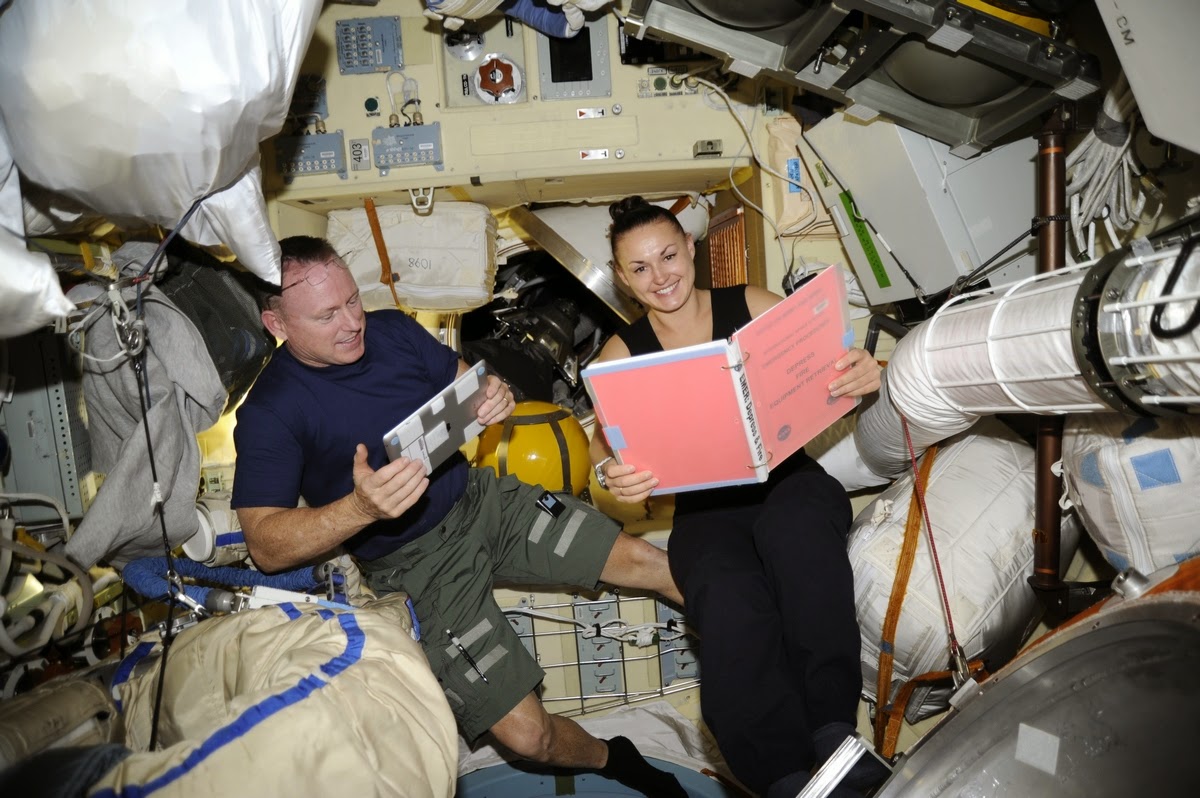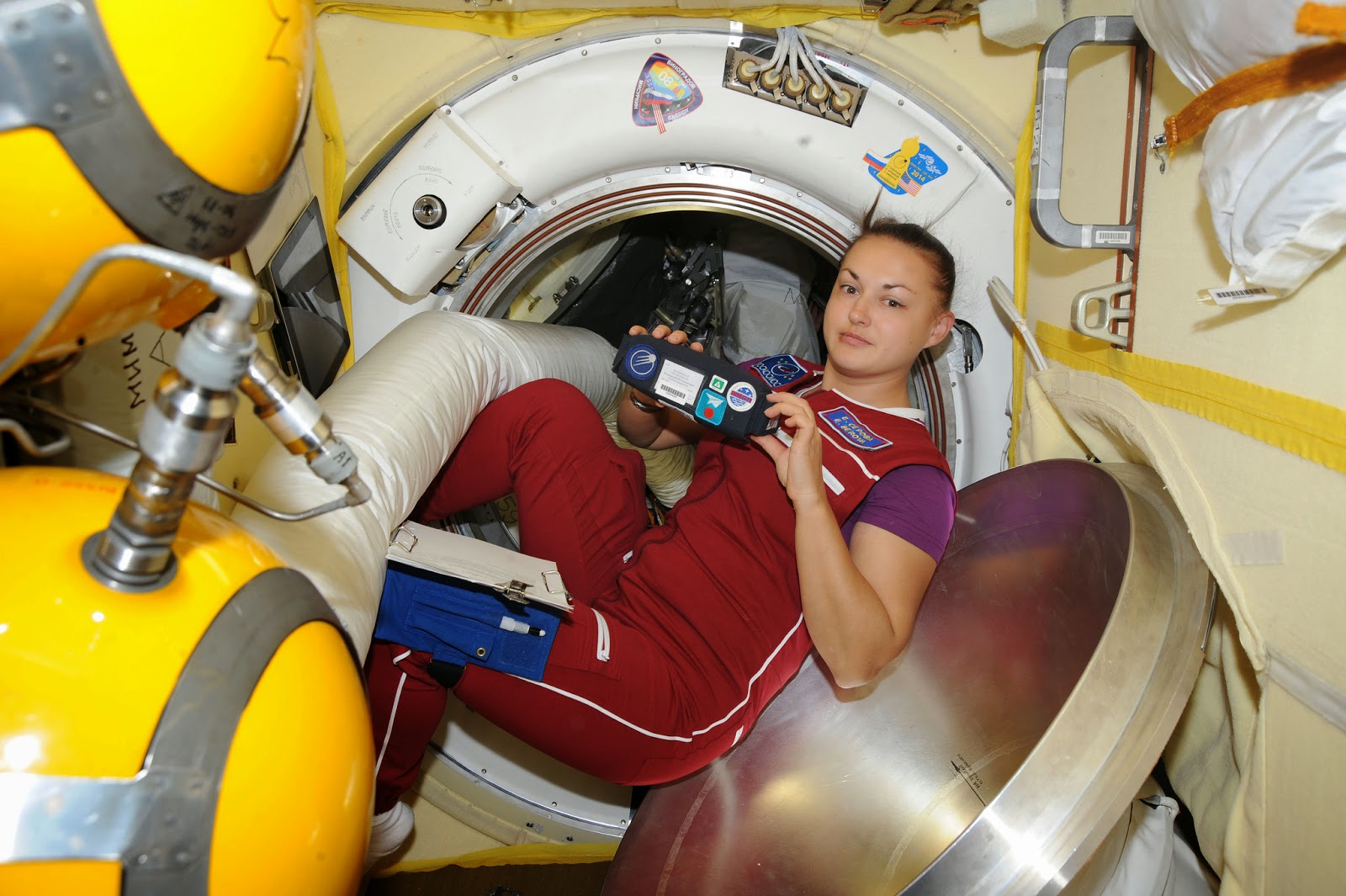
Yelena Serova who became the first female Russian cosmonaut to visit the International Space Station (ISS) in September, is adjusting very fast to life in space and she's now behaving like a permanent ISS inhabitant. "I've already get used to live in microgravity conditions. I excercise regullary, and conduct scientific experiments as well," Serova writes on her blog on Roscosmos website. "Last week I've spent much time on doing excercises regarding reacting in emergency situations like fire or depressurization, for example."
On the ISS Mailbox blog, she writes about the everyday life of her crew, their work on the Kardiovektor experiment on the space cardiology, and also about practicing skills necessary in the emergency situations that can arise in the International Space Station.
"ISS-41/42 crew on the line! I take the relay from my colleague Oleg Artemiev!" Serova wrote in her first post.
 |
| NASA astronaut Barry Wilmore and Roscosmos cosmonaut Yelena Serova with the book for emergencies 'EMER-1a'. Credit: Roscosmos |
The main purpose of the Kardiovektor experiment is to provide new scientific information on the role of right and left heart in the adaptation of the circulatory system to the conditions of long-duration space flight. "I will conduct this experiment on a monthly basis during my stay at the station," she revealed.
On Tuesday, Serova performed an equipment check for the Otklik experiment, which is developing a system to track the impacts of particles on the station’s exterior using piezoelectric sensors. Throughout the day she also manually mixed test samples in the Kaskad cell-cultivation experiment’s bioreactor. On Friday she performed routine daily maintenance on the life-support system in the Zvezda service module.
Serova also conducts observations for the Relaxation experiment. That study observes chemical reactions due to jet exhaust and body reentries in the Earth’s upper atmosphere. She is also involved in the Calcium experiment, which examines the causes of the loss of bone density that occurs in a weightless environment. For this study, Russian researchers are looking at the solubility of calcium phosphates and bone samples in water in space.
 |
| Russian cosmonaut Yeena Serova, Expedition 41 flight engineer, poses for a photo near a hatch in the Russian segment of the International Space Station. Credit: NASA |
Serova is the fourth female cosmonaut from Russia to ever fly in space, the first being USSR's Valentina Tereshkova who made history in 1963 as the first woman ever to go into space on a sole flight. Tereshkova was followed by Svetlana Savitskaya who circled the Earth orbit twice, in 1982 and 1984. Yelena Kondakova was the third to be put into orbit in 1994 and 1997. A total of 57 women have flown to space so far.






Comments